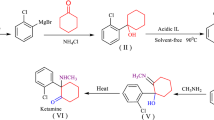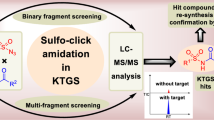Abstract
The mechanism for the hydrolysis and aminolysis reactions of potential nerve agent tabun have been investigated both at DFT/M062X level and at ab initio MP2 level of theory. Effect of solvent water has also been incorporated using Minnesota SMD model. Based on leaving groups, there are three probable dissociation pathways of tabun: (1) elimination of HCN, (2) elimination of dimethyl amine and (3) elimination of ethanol. Each of the pathways follows a stepwise neutral route through two transition states. From the mechanism, it has been established that the HCN removal pathway is most favorable than the other two due to greater leaving tendency of the cyanide group. The reaction possesses two four-membered transition state in each path, i.e., for the addition of ammonia/water and for the release of leaving groups. As the four-membered cyclic TSs are not so favorable, the investigated reactions were found quite a bit high energetic. The first addition step of the H2O or NH3 is found as the rate-determining step. The reactivity of ammonia toward tabun has been found highly favorable (by ~ 7.6 kcal mol−1) than the water. This can be easily explained using the fact that the nucleophilicity of NH3 is higher than the H2O. Further, we have seen that water can be a very effective catalyst in the aminolysis reaction as it reduces the barrier of activation of the RDS by ~ 10 kcal mol−1. Self-catalyzed hydrolysis of water has also been performed, and it decreases the activation of ~ 11 kcal mol−1 than the uncatalyzed pathways. The significant reduction of energy of activation takes place due to the formation of six-membered transition states that makes much easier hydrogen transfer compared to the four-membered transition state formed in case of uncatalyzed aminolysis reactions.









Similar content being viewed by others
References
Engel R (1992) Handbook of organophosphorus chemistry. Marcel Dekker, New York
Quin LD (2000) A guide to organophosphorus chemistry. Wiley, New York
DeFrank JJ (1991) Organophosphorus cholinesterase inhibitors: detoxification by microbial enzymes. In: Kelly JW, Baldwin TO (eds) Applications of enzyme biotechnology. Plenum Press, New York
Quin LD, Quin GS (2000) A guide to organophosphorus chemistry. Wiley, New York
Vayron P, Rebard PY, Taran F, Créminon C, Frobert Y, Grassi J, Mioskowski C (2000) Toward antibody-catalyzed hydrolysis of organophosphorus poisons. Proc Natl Acad Sci USA 97:7058–7063
Um IH, Jeon SE, Baek MH, Park HR (2003) Significant and differential acceleration of dephosphorylation of the insecticides, paraoxon and parathion, caused by alkali metal ethoxides. Chem Commun 24:3016–3017
Kabra V, Ojha S, Kaushik P, Meel A (2006) A synthetic strategy for novel organothiophosphates incorporating a pyridine ring. Phosphorus Sulfur Silicon Relat Elem 181:2337–2344
Bunton CA (1997) Chemical warfare. In: Lagowski JJ (ed) Macmillan encyclopedia of chemistry, vol. Macmillan reference USA, Simon and Schuster Macmillan, New York, pp 343–346
Kim K, Tsay OG, Atwood DA, Churchill DG (2011) Destruction and detection of chemical warfare agents. Chem Rev 111:5345–5403
Eyer P, Szinicz L, Thiermann H, Worek F, Zilker T (2007) Testing of antidotes for organophosphorus compounds: experimental procedures and clinical reality. Toxicology 233:108–119
Hoenig SL (2007) Compendium of chemical warfare agents chapter V. Springer, New York
Buncel E, Albright KG, Onyido I (2004) Nucleophilic displacement on 4-nitrophenyl dimethyl phosphinate by ethoxide ion: alkali metal ion catalysis and mechanism. Org Biomol Chem 2:601–610
Tsang JSW, Neverov AA, Brown RS (2003) La3+-Catalyzed methanolysis of hydroxypropyl-p-nitrophenyl phosphate as a model for the RNA transesterification reaction. J Am Chem Soc 125:1559–1566
Kumar VP, Ganguly B, Bhattacharya S (2004) Computational study on hydroxybenzotriazoles as reagents for ester hydrolysis. J Org Chem 69:8634–8642
Michalkova A, Leszczynski J (2009) Catalytic decomposition of organophosphorus compounds. In: Leszczynski J, Shukla M (eds) Practical aspects of computational chemistry. Springer, Dordrecht
Michalkova A, Gorb L, Leszczynski J (2007) A quest for efficient methods of disintegration of organophosphorus compounds: modeling adsorption and decomposition processes. In: Sokalski WA (ed) Molecular materials with specific interactions—modeling and design. Challenges and advances in computational chemistry and physics, vol 4. Springer, Dordrecht
Liu B, McConnell LL, Torrents A (2001) Hydrolysis of chlorpyrifos in natural waters of the Chesapeake Bay. Chemosphere 44:1315–1323
Macalady DL, Wolfe NL (1983) New perspectives on the hydrolytic degradation of the organophosphorothioate insecticide chlorpyrifos. J Agric Food Chem 31:1139–1147
Wolfe NL, Zepp RG, Gordon JA, Baughman GL, Cline DM (1977) Kinetics of chemical degradation of malathion in water. Environ Sci Technol 11:88–93
Han X, Balakrishnan VK, vanLoon GW, Buncel E (2006) Degradation of the pesticide fenitrothion as mediated by cationic surfactants and α-nucleophilic reagents. Langmuir 22:9009–9017
Mandal D, Mondal B, Das AK (2010) Isomerization and decomposition of a model nerve agent: a computational analysis of the reaction energetics and kinetics of dimethyl ethylphosphonate. J Phys Chem A 114:10717–10725
Kazimierowicz ED, Sokalski WA, Leszczynski JJ (2008) Gas-phase mechanisms of degradation of hazardous organophosphorus compounds: do they follow a common pattern of alkaline hydrolysis reaction as in phosphotriesterase? J Phys Chem B 112:9982–9991
Mandal D, Mondal B, Das AK (2012) Nucleophilic degradation of fenitrothion insecticide and performance of nucleophiles: a computational study. J Phys Chem A 116:2536–2546
Kirstin P, Carey P (2017) Tabun: in reference module in biomedical sciences. Elsevier, New York. https://doi.org/10.1016/B978-0-12-801238-3.97320-3
Valiyaveettil M, Alamneh Y, Biggemann L, Soojhawon I, Bhupendra PD, Nambiar MP (2010) Efficient hydrolysis of the chemical warfare nerve agent tabun by recombinant and purified human and rabbit serum paraoxonase 1. Biochem Biophys Res Commun 403:97–102
Safari L, Vessally E, Bekhradnia A, Hosseinian A, Edjlali L (2017) A density functional theory study of the sensitivity of two-dimensional BN nanosheet to nerve agents cyclosarin and tabun. Thin Solid Films 623:157–163
Becker G, Kawan A, Szinicz L (1997) Direct reaction of oximes with sarin, soman, or tabun in vitro. Arch Toxicol 71:714–718
De Oliveira OV, Cuya T, Ferreira EC, da Silva GA (2018) Theoretical investigations of human acetylcholinesterase inhibition efficiency by neurotoxic organophosphorus compounds. Chem Phys Lett 706:82–86
Khan MAS, Lo R, Bandyopadhyay T, Ganguly B (2011) Probing the reactivation process of sarin-inhibited acetylcholinesterase with α-nucleophiles: hydroxylamine anion is predicted to be a better antidote with DFT calculations. J Mol Graph Model 29:1039–1046
Bhattacharjee AK, Kuca K, Musilek GRK (2010) In silico pharmacophore model for tabun-inhibited acetylcholinesterase reactivators: a study of their stereoelectronic properties. Chem Res Toxicol 23:26–36
Michalkova A, Paukku Y, Majumdar D, Leszczynski J (2007) Theoretical study of adsorption of tabun on calcium oxide clusters. Chem Phys Lett 438:72–77
Um IH, Han J, Shin YH (2009) Aminolysis of X-substituted phenyl diphenylphosphinates: effect of amine nature on reactivity and transition-state structure. J Org Chem 74:3073–3078
Hoque MEU, Dey S, Guha AK, Kim CK, Lee B, Lee HW (2007) Kinetics and mechanism of the aminolysis of aryl phenyl chlorothiophosphates with anilines. J Org Chem 72:5493–5499
Um IH, Akhtar K, Shin Y, Han J (2007) Aminolyses of aryl diphenylphosphinates and diphenylphosphinothioates: effect of modification of electrophilic center from P=O to P=S. J Org Chem 72:3823–3829
Zhang H, Chen D, Zhang G, Mi S, Lu N (2009) Mechanism of the aminolysis of dimethyl phenylphosphinate: a DFT study. J Mol Struct Theochem 908:12–18
Zhao Y, Truhlar DG (2007) The M06 suite of density functionals for main group thermochemistry, thermochemical kinetics, noncovalent interactions, excited states, and transition elements: two new functionals and systematic testing of four M06-class functionals and 12 other functionals. Theor Chem Acc 120:215–241
Møller C, Plesset MS (1934) Note on an approximation treatment for many-electron systems. Phys Rev 46:618–622
Head-Gordon M, Pople JA, Frisch MJ (1988) MP2 energy evaluation by direct methods. Chem Phys Lett 153:503–506
Frisch MJ, Head-Gordon M, Pople JA (1990a) A direct MP2 gradient method. Chem Phys Lett 166:275–280
Frisch MJ, Head-Gordon M, Pople JA (1990b) Semi-direct algorithms for the MP2 energy and gradient. Chem Phys Lett 166:281–289
Krishnan R, Binkley JS, Seeger R, Pople JA (1980) Self-consistent molecular orbital methods. XX. A basis set for correlated wave functions. J Chem Phys 72:650
Peng C, Schlegel HB (1993) Combining synchronous transit and quasi-newton methods for finding transition states. Israel J Chem 33:449–454
Gonzales C, Schlegel HB (1989) An improved algorithm for reaction path following. J Chem Phys 90:2154–2162
Gonzales C, Schlegel HB (1990) Reaction path following in mass-weighted internal coordinates. J Phys Chem 94:5523–5527
Marenich AV, Cramer CJ, Truhlar DG (2009) Universal solvation model based on solute electron density and a continuum model of the solvent defined by the bulk dielectric constant and atomic surface tensions. J Phys Chem B 113:6378–6396
Frisch MJ, Trucks GW, Schlegel HB, Scuseria GE, Robb MA, Cheeseman JR, Scalmani G, Barone V, Mennucci B, Petersson GA, Nakatsuji H, Caricato M, Li X, Hratchian HP, Izmaylov AF, Bloino J, Zheng G, Sonnenberg JL, Hada M, Ehara M, Toyota K, Fukuda R, Hasegawa J, Ishida M, Nakajima T, Honda Y, Kitao O, Nakai H, Vreven T, Montgomery JA Jr, Peralta JE, Ogliaro F, Bearpark M, Heyd JJ, Brothers E, Kudin KN, Staroverov VN, Kobayashi R, Normand J, Raghavachari K, Rendell A, Burant JC, Iyengar SS, Tomasi J, Cossi M, Rega N, Millam JM, Klene M, Knox JE, Cross JB, Bakken V, Adamo C, Jaramillo J, Gomperts R, Stratmann RE, Yazyev O, Austin AJ, Cammi R, Pomelli C, Ochterski JW, Martin RL, Morokuma K, Zakrzewski VG, Voth GA, Salvador P, Dannenberg JJ, Dapprich S, Daniels AD, Farkas O, Foresman JB, Ortiz JV, Cioslowski J, Fox DJ (2018) Gaussian 16. Gaussian Inc, Wallingford
Allouche AR (2011) Gabedit: a graphical user interface for computational chemistry softwares. J Comput Chem 32:174–182
Stewart, JJP MOPAC (2009) Stewart computational chemistry, version 9.259W. https://openmopac.net/
Mandal D, Sen K, Das AK (2012) Aminolysis of a model nerve agent: a computational reaction mechanism study of O,S-dimethyl methylphosphonothiolate. J Phys Chem A 116:8382–8396
Ilieva S, Galabov B, Musaev DG, Morokuma K (2003) Computational study of the aminolysis of 2-benzoxazolinone. J Org Chem 68:3406–3412
Xia X, Zhang C, Xue Y, Kim CK, Yan G (2008) DFT study and Monte Carlo simulation on the aminolysis of XC(O)OCH3 (X = NH2, H, and CF3) with monomeric and dimeric ammonias. J Chem Theory Comput 4:1643–1653
Ilieva S, Galabov B, Musaev DG, Morokuma K, Schaefer HF III (2003) Computational study of the aminolysis of esters. the reaction of methylformate with ammonia. J Org Chem 68:1496–1502
Petrova T, Okovytyy S, Gorb L, Leszczynski J (2008) Computational study of the aminolysis of anhydrides: effect of the catalysis to the reaction of succinic anhydride with methylamine in gas phase and nonpolar solution. J Phys Chem A 112:5224–5235
Yang W, Drueckhammer DG (2000) Computational studies of the aminolysis of oxoesters and thioesters in aqueous solution. Org Lett 26:4133–4136
Funding
D. Mandal is very much grateful to the Department of Science and Technology, Government of India, for providing the INSPIRE Faculty Fellowship (DST/INSPIRE/04/2016/001948).
Author information
Authors and Affiliations
Corresponding author
Ethics declarations
Conflict of interest
The author declares that he has no conflicts of interest.
Additional information
Publisher's Note
Springer Nature remains neutral with regard to jurisdictional claims in published maps and institutional affiliations.
Electronic supplementary material
Below is the link to the electronic supplementary material.
Rights and permissions
About this article
Cite this article
Mandal, D. Hydrolysis versus aminolysis of a potential nerve agent tabun: a computational reaction mechanism study. Theor Chem Acc 139, 169 (2020). https://doi.org/10.1007/s00214-020-02688-8
Received:
Accepted:
Published:
DOI: https://doi.org/10.1007/s00214-020-02688-8




